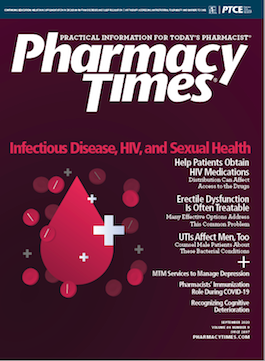Publication
Article
Pharmacy Times
Flip the Pharmacy
Author(s):
New transformation effort focuses on identifying and adopting best practices for workflows to enhance delivery of services.
For many years, grantors, grantees, like-minded schools of pharmacy, and other supporters have focused resources to innovate in community-based pharmacy practice.
A famous example is the Asheville Project, launched in 1997 in North Carolina, which provided education and personal oversight for city employees with chronic health problems, such as asthma, diabetes, high cholesterol, and hypertension. The project demonstrated better adherence and clinical measures, increased worker productivity, and lowered overall cost of care.
Despite being hailed as the turning point for the pharmacy profession and the sustainability of community-based pharmacy, the Asheville Project, along with many other successful innovations, did not get to sufficient scale to have widespread pharmacy practice and policy outcomes favorable to the profession. Now, the Community Pharmacy Foundation (CPF) is seeking to make a lasting and meaningful change in the perceptions of clinical outcomes with pharmacist intervention on a large national scale.
“CPF is committed to supporting innovative sustainable projects illuminating community pharmacists as highly trained and trusted medication experts [who] are part of the health care team, increasing health care access to optimize patient medication experiences and health outcomes,” said Anne Marie Kondic, PharmD, executive director of
the foundation.
Enter Flip the Pharmacy (FtP), a new pharmacy-practice transformation effort focused on identifying and adopting best practices for workflows that enable enhanced delivery of community pharmacy health care services. The program is founded and funded by the CPF. An FtP team comprises a team lead and coaches who are assigned to participating pharmacies. FtP team members meet regularly with the pharmacy’s staff throughout the process, following a set of materials and aides, guided by the FtP transformation leads, Cody Clifton, PharmD, and Randy McDonough, PharmD, MS.
Each summer, prospective pharmacies apply for an October 1 start and are scored using blinded applications. Pharmacies not selected may still participate actively through self-funding or by obtaining external funding. Pharmacies may also participate passively through use of FtP materials posted online (www.flipthepharmacy.com).
PROGRAM GOALS
FtP endeavors to demonstrate that community pharmacies can deliver services with data-driven outcomes. By leveraging their high-touch environment for frequent patient engagement, follow-up, and monitoring, the goal is to show that pharmacies can engage with patients for better health outcomes. For example, by implementing a plan of care and recording clinical markers, such as mm Hg in the case of hypertension and A1c for diabetes, community pharmacies are better positioned to provide an advanced scope of clinical practice and potentially yield payment for those services. Other areas in focus are behavioral health and immunizations, coronavirus disease 2019 (COVID-19), and pain management.
PROGRESS IS MONITORED AND MEASURED
FtP relies heavily on a pharmacist electronic-care plan standard to collect data in near real-time about pharmacist service delivery and quality. Data about who performed the service, which laboratory results or vitals were collected, and what interventions took place are collected and shared with coaches, participating pharmacies, and team leads. Each month, FtP milestones are determined based on the disease and service of focus.
REQUIREMENTS FOR ACTIVE PARTICIPATION
Each active FtP coach, pharmacy, and team lead has access to sharing of best practices and implementation programming. The approach is agile, with adjustments made in response to feedback, sharing challenges and successes. Participation in the requires data sharing using the pharmacist electronic-care plan standard or contributing data in the aggregate.
WHY FTP WORKS
The health care system is built to treat acute conditions. Pharmacy is no different. A pharmacist fills a prescription in a moment-in-time event without regard to past or future context. Chronic conditions dominate the demand for health care delivery. FtP seeks to transform pharmacy business modeling and workflow to match patient needs and positive outcomes.
TRANSFORMATION
Several pressure points are addressed when transforming a pharmacy, including as follows:
Creating roles for nonpharmacist support staff members. FtP seeks to optimize roles that address common challenges to the health care system, such as analysis of data, care team communications, patient activation and engagement, and social determinants of health. Evolving and integrating pharmacist and technician roles are essential to accountable care and successful population health management.
Developing the business model and expressing value. Ultimately, the FtP program seeks to demonstrate a large-scale patient benefit deserving of remuneration. By optimizing patient care outcomes that are measurable, the return on investment to the pharmacy for moving toward longitudinal, patient-level health care services should be compensable.
Establishing working relationships. The FtP program seeks to encourage pharmacies to build and maintain meaningful working relationships with other care team members.
Improving patient follow-up and monitoring. Community based pharmacies have a great opportunity to lead the health care system in effective patient follow-up and monitoring using a system-leading number of patient touch points. FtP places a focus on this follow-up effort.
Leveraging the appointment-based model. Medication synchronization is at the core of this model. FtP seeks to efficiently layer care coordination, medication-use support services, and patient evaluation alongside the mechanical medication synchronization process.
Optimizing the use of electronic care plans and technology. The eCare Plan is fundamental to the successful operationalization of the FtP program. Working alongside software companies, pharmacies learn to develop best practices in documentation processes. The first FtP cohort—550-plus pharmacies across 28 nationwide practice transformation teams—have been resilient since program inception and through the emerging pandemic. Despite rapid pivoting to address COVID-19 immediate practice needs, participating pharmacists have continued to transform their practices to provide enhanced services and increase documentation of their clinical work through eCare Plan technologies. The future is bright, as new teams for cohort 2 join the program, and increased collected data will allow greater analysis of not just the quantity but also the quality of clinical metrics and patient outcomes.
Ned Milenkovich, PharmD, JD, is co-chair of the health care practice at Much Shelist, PC, in Chicago, Illinois, and former vice chairman of the Illinois State Board of Pharmacy.







